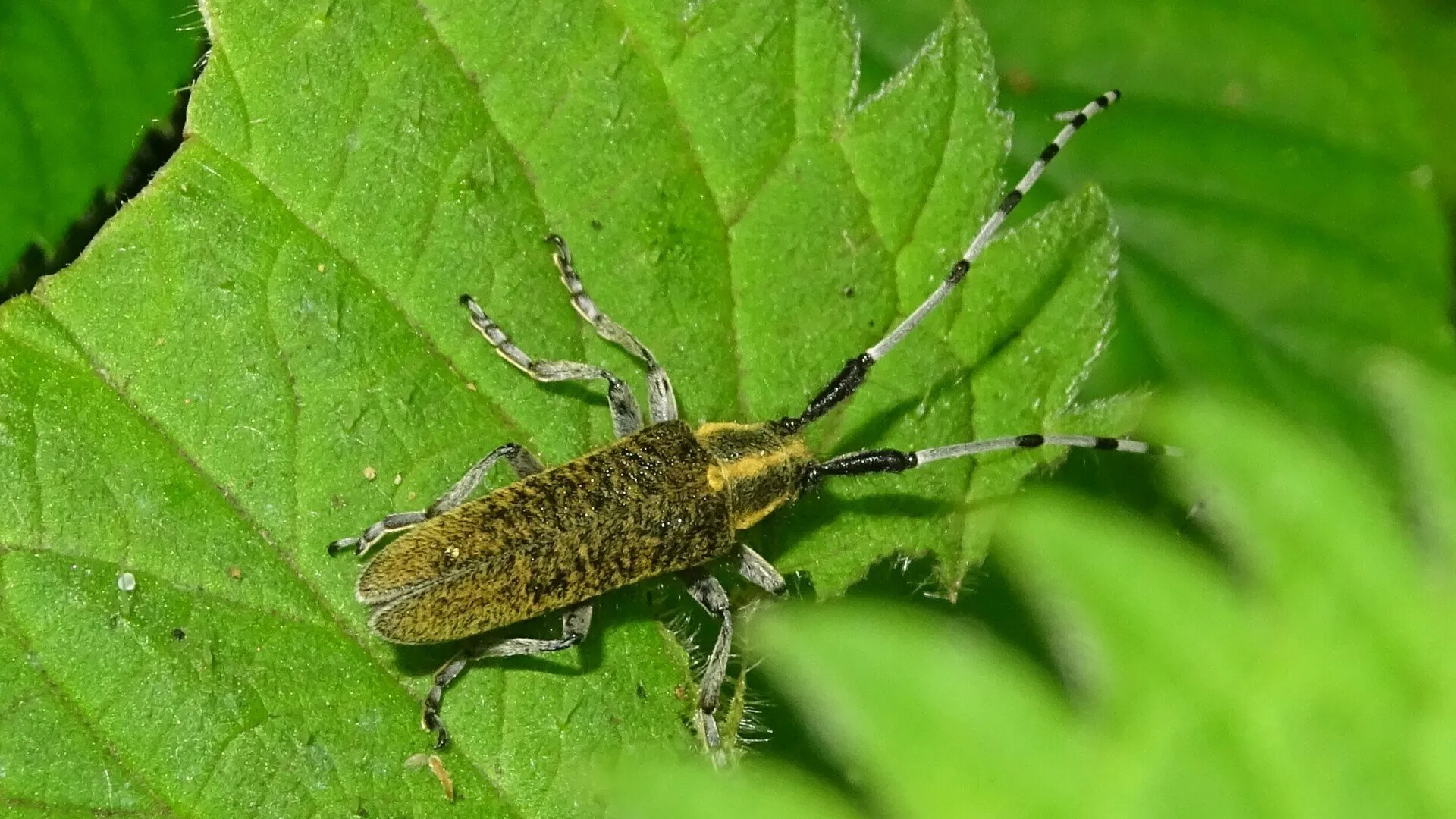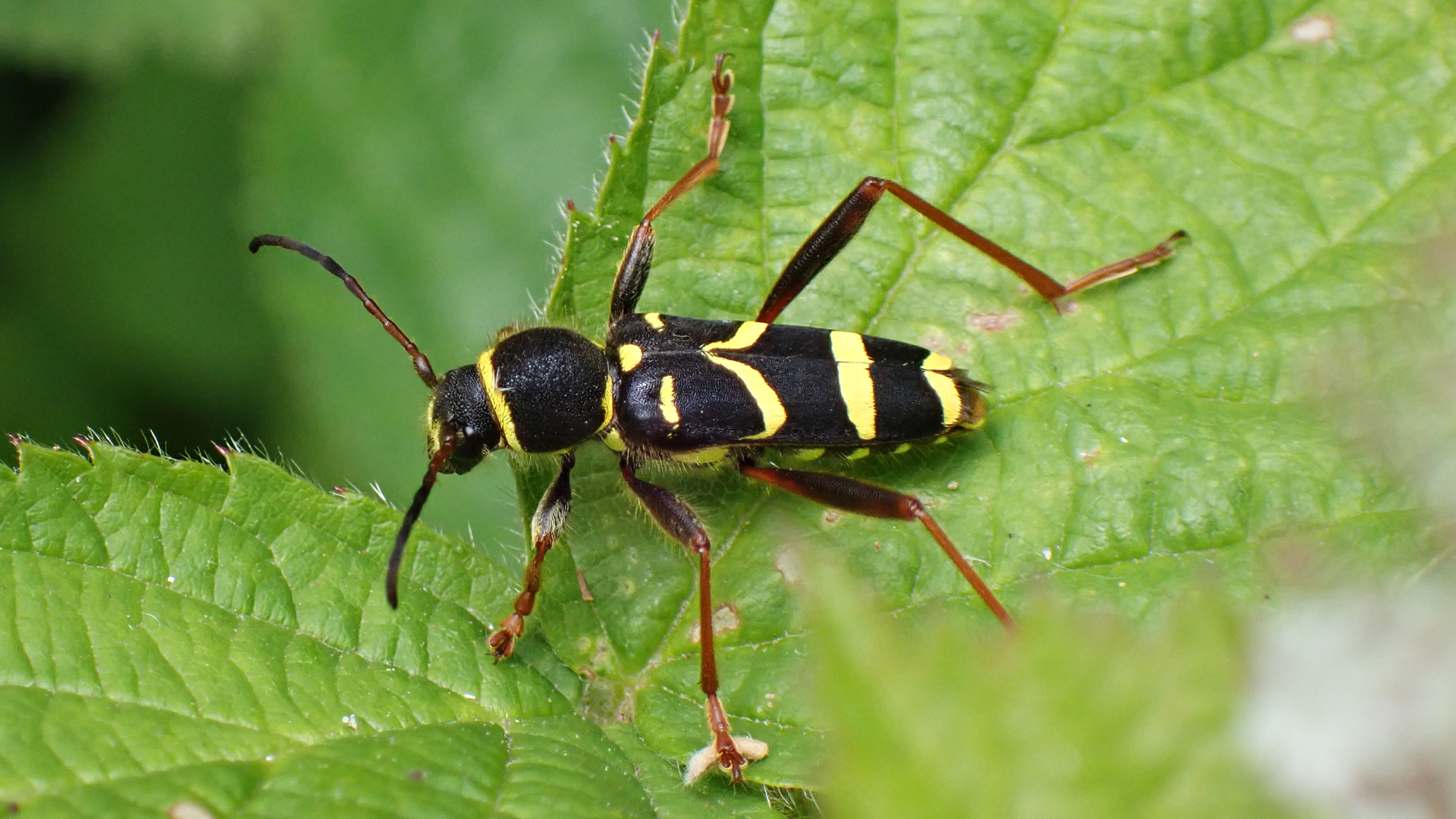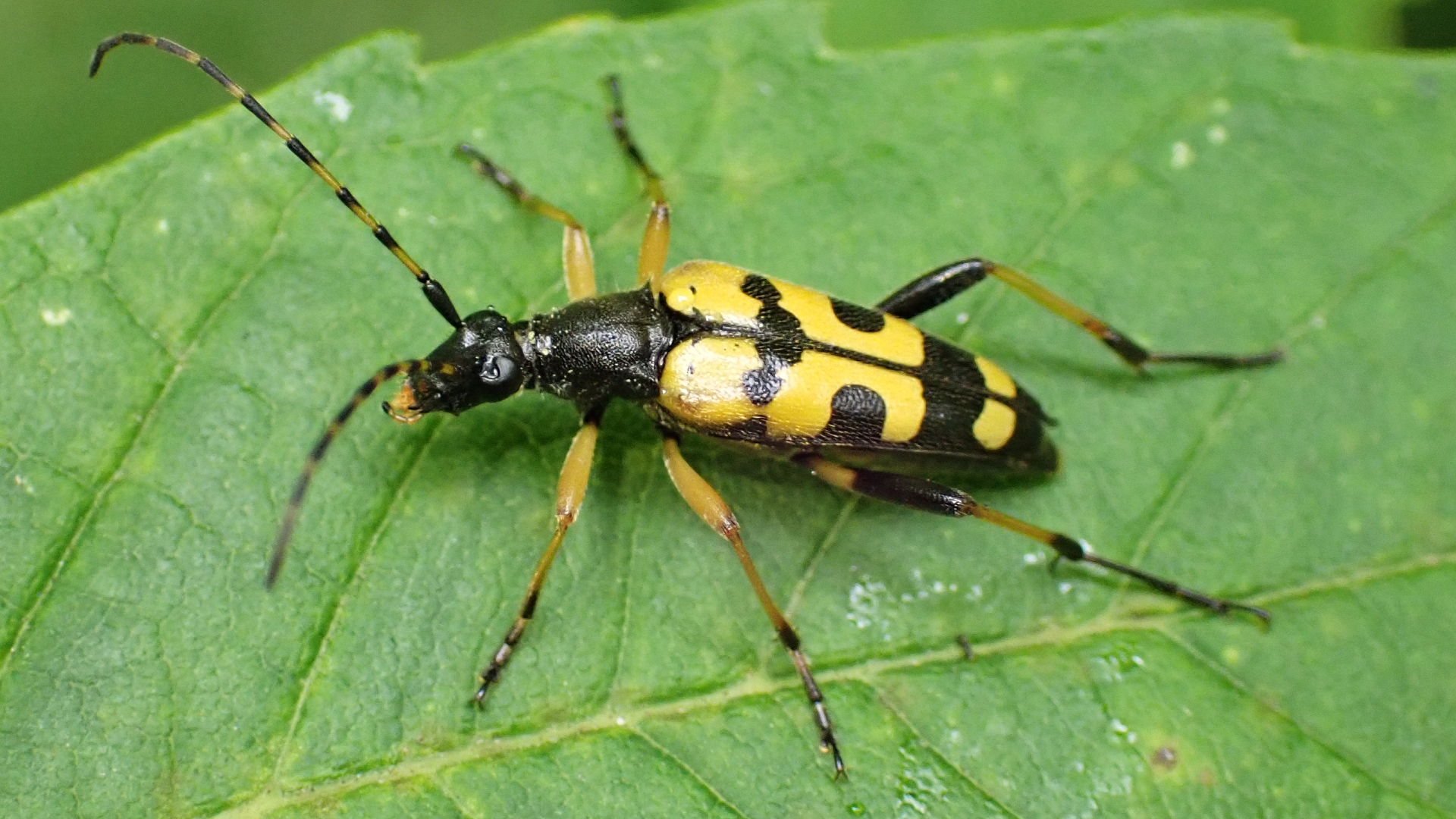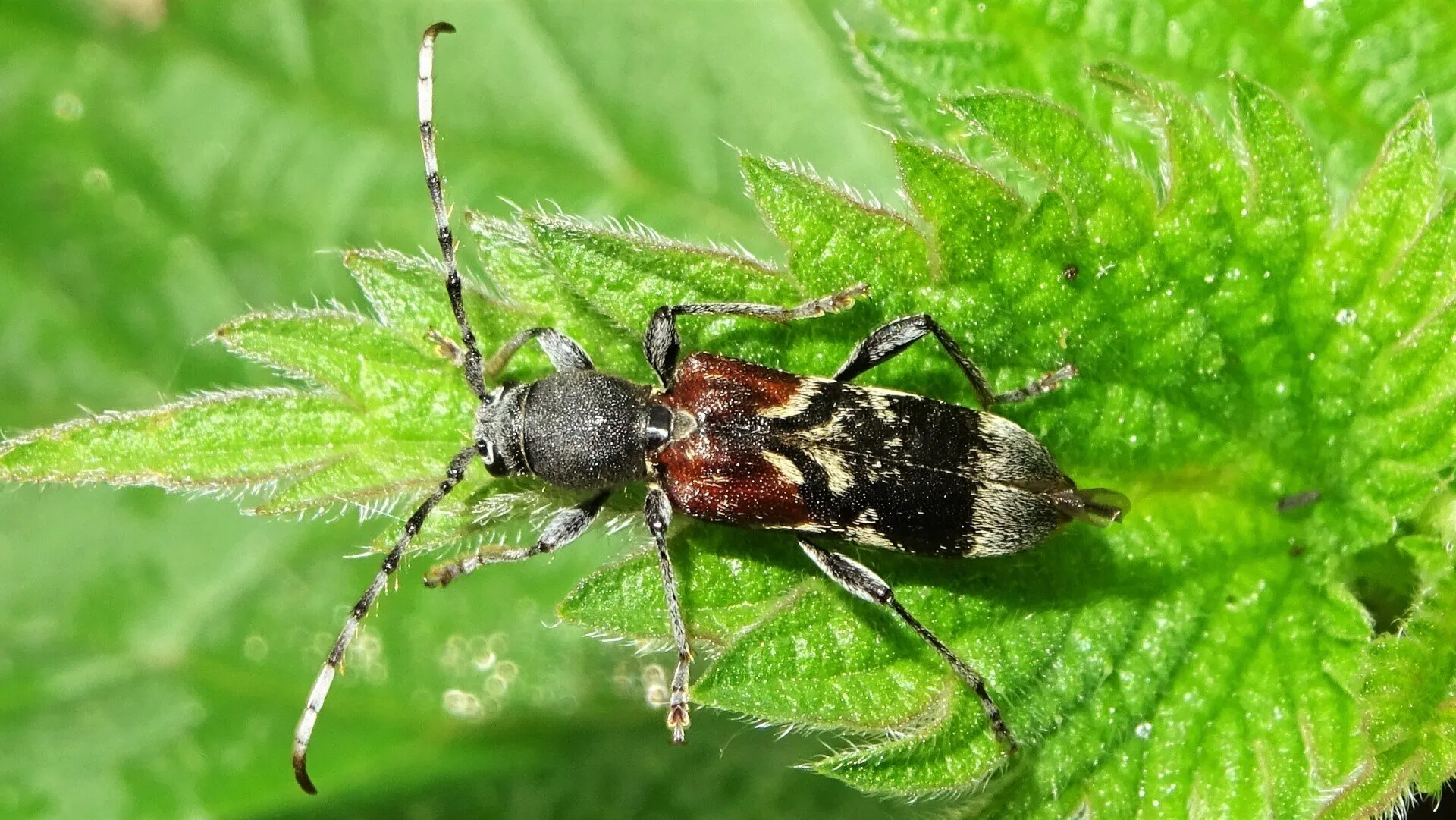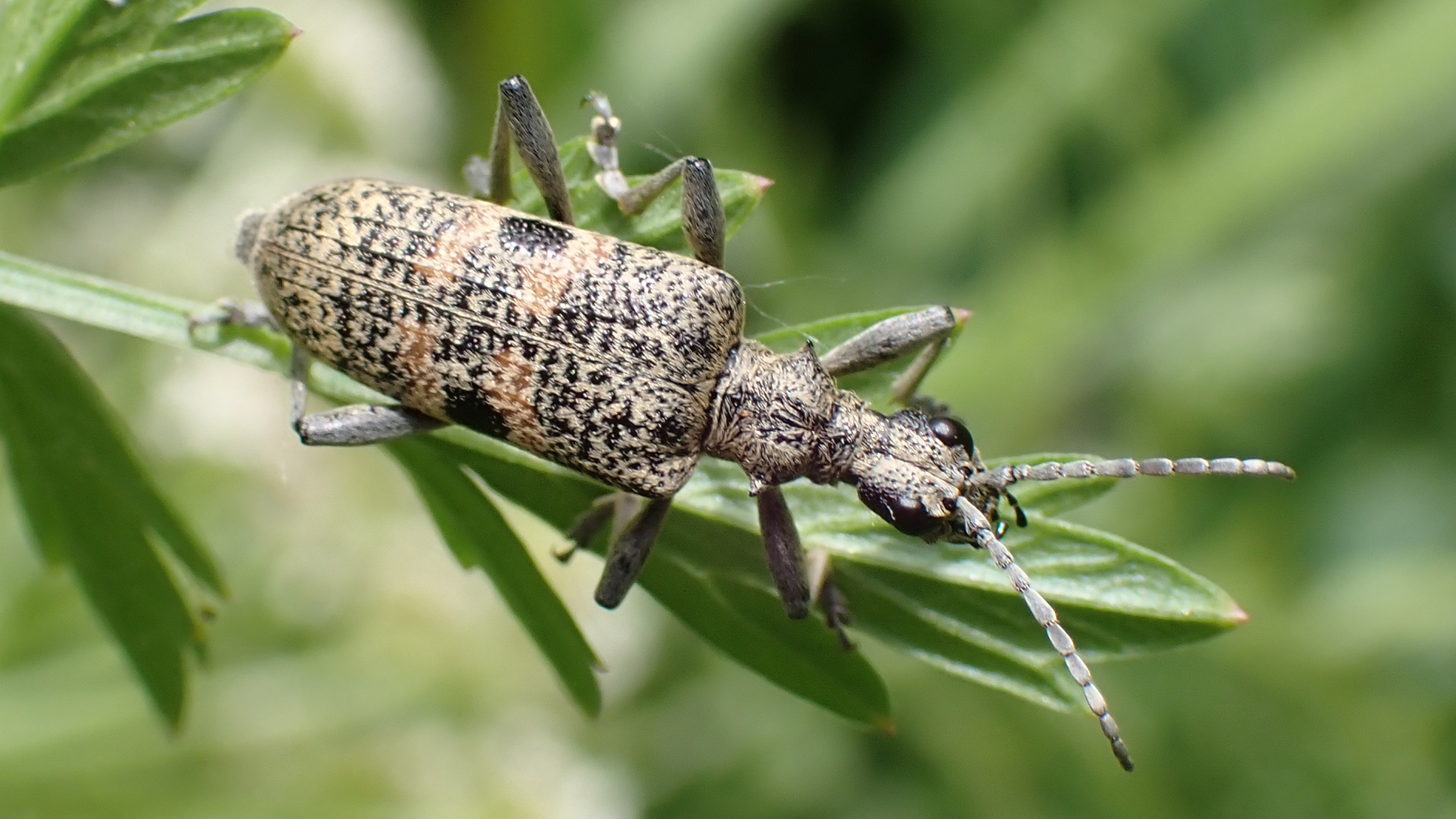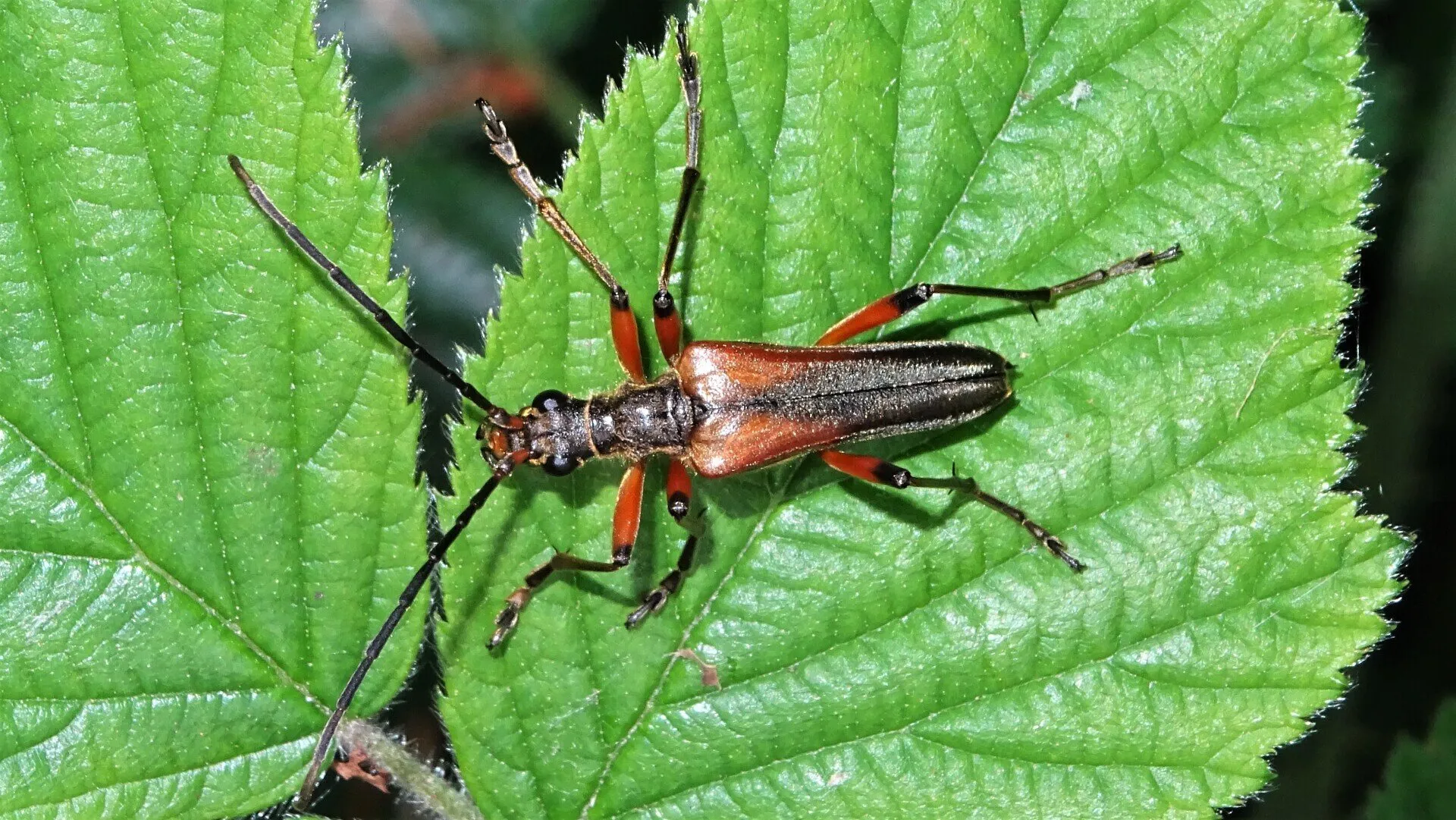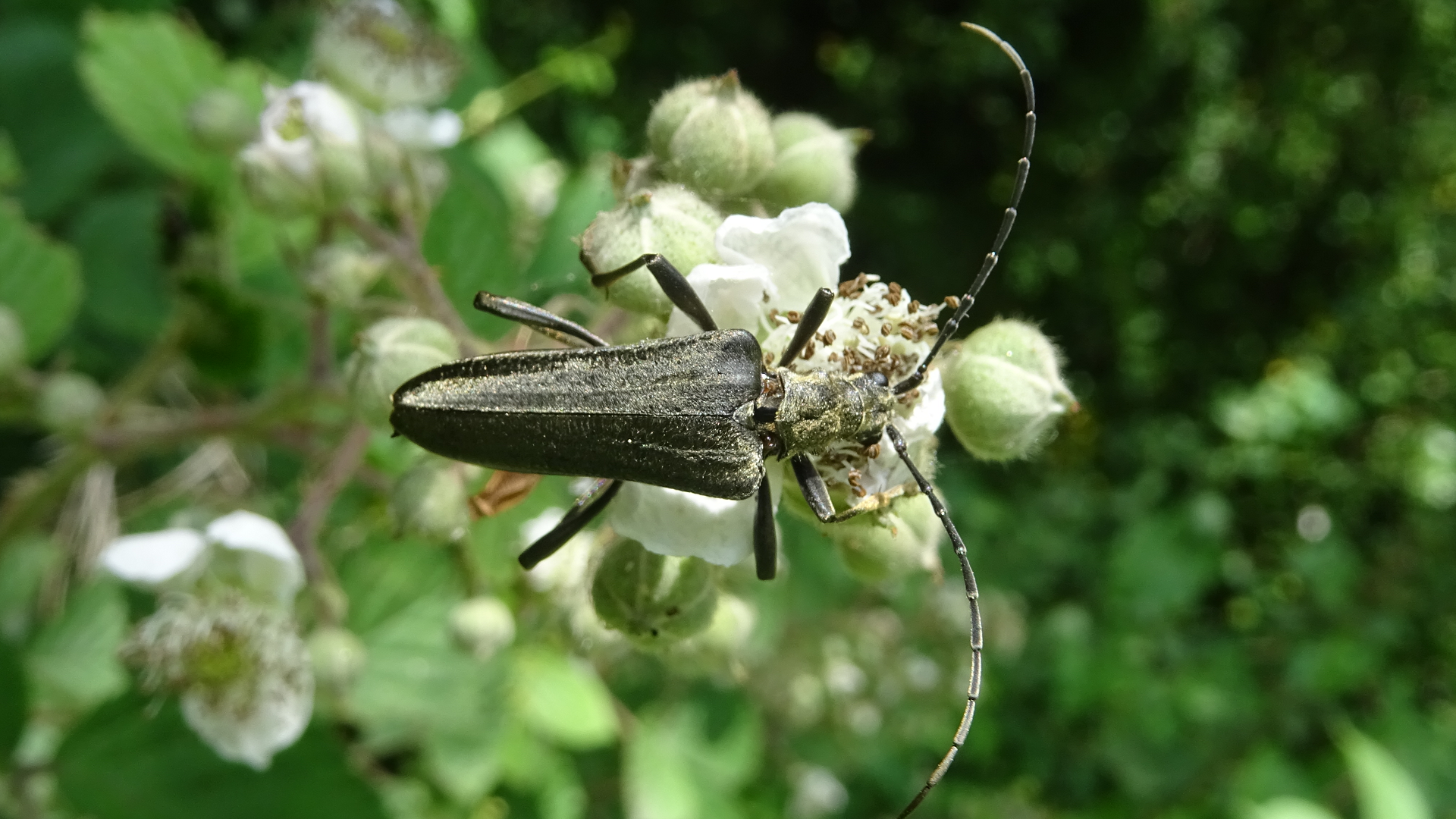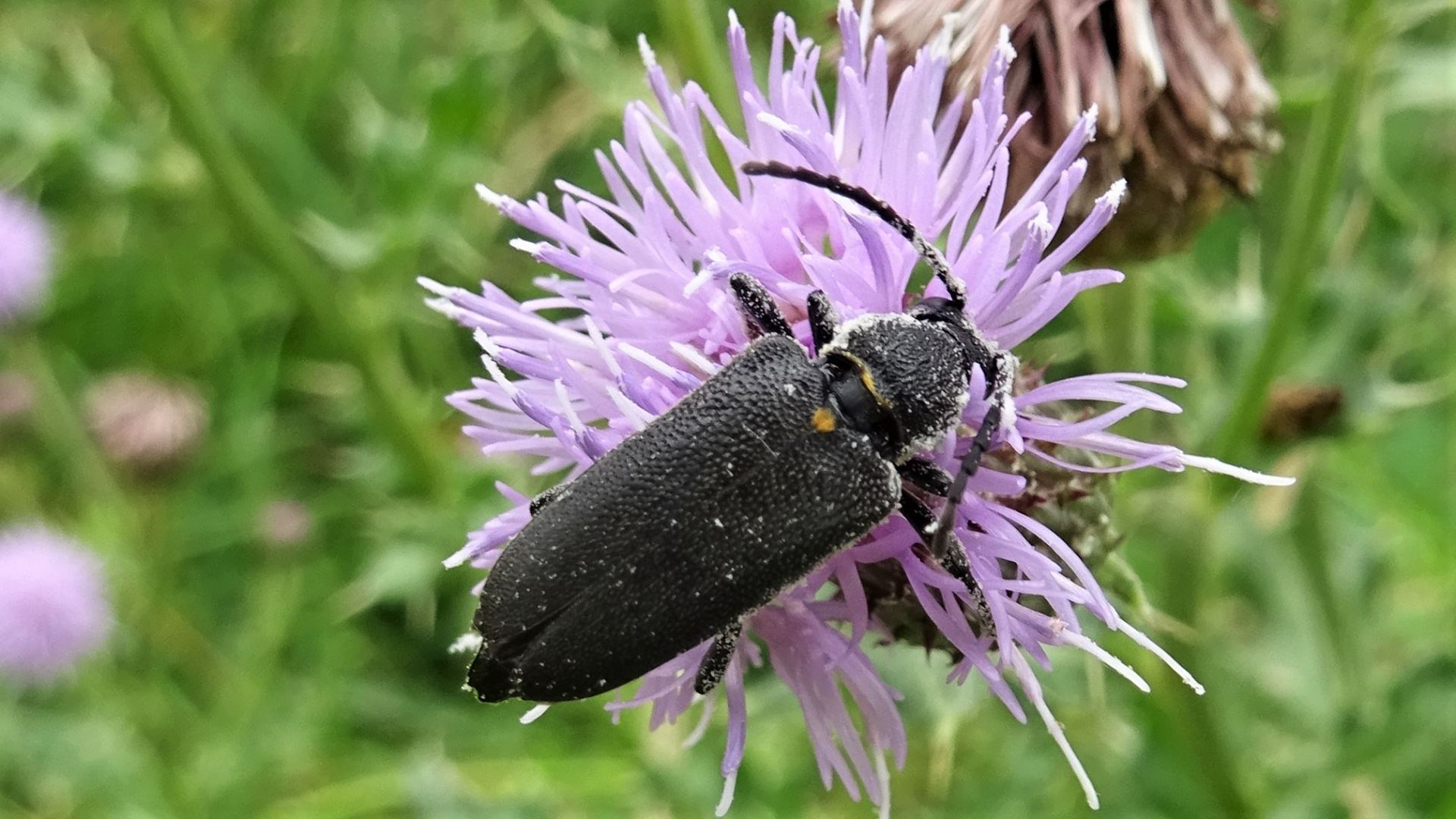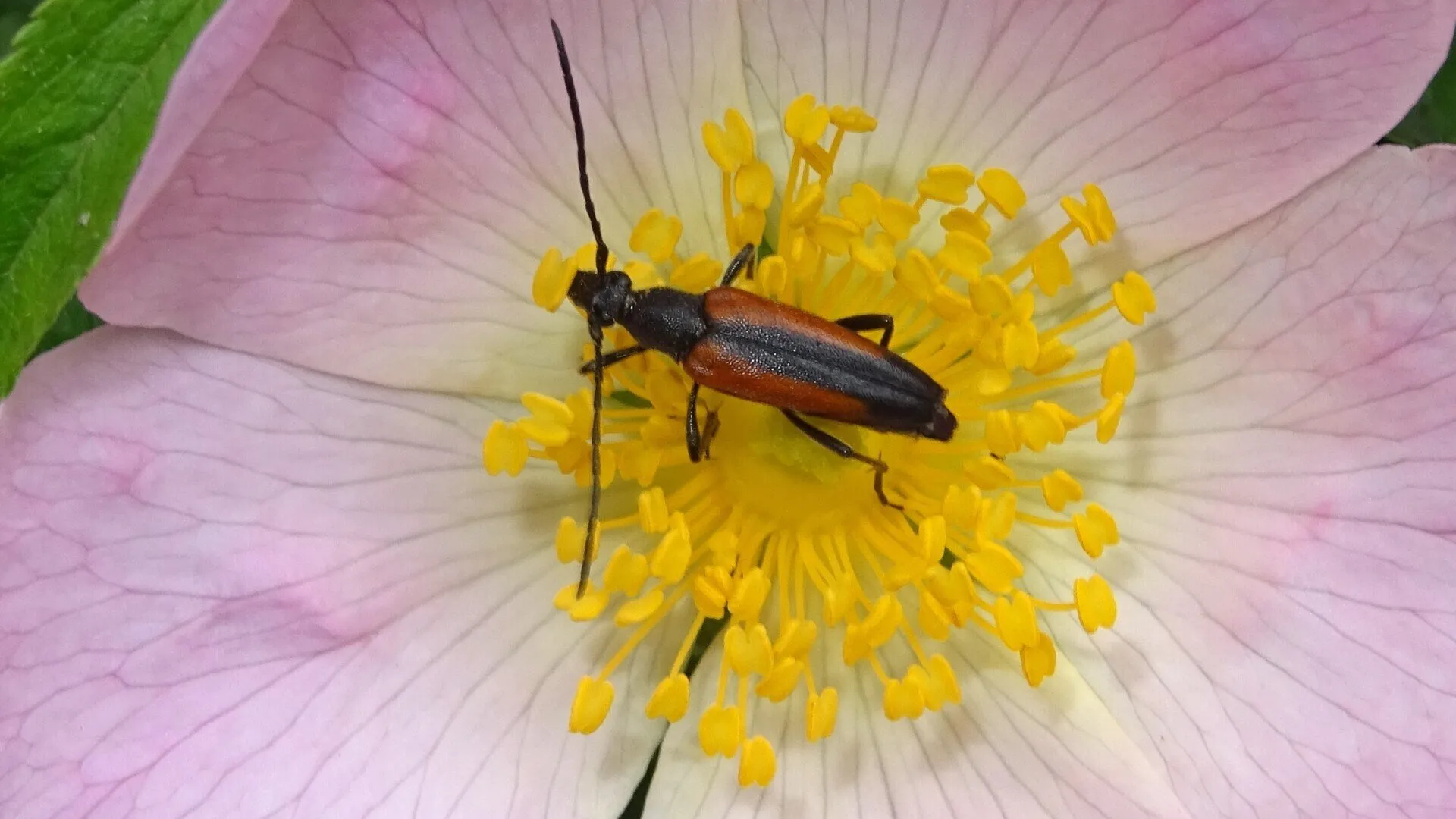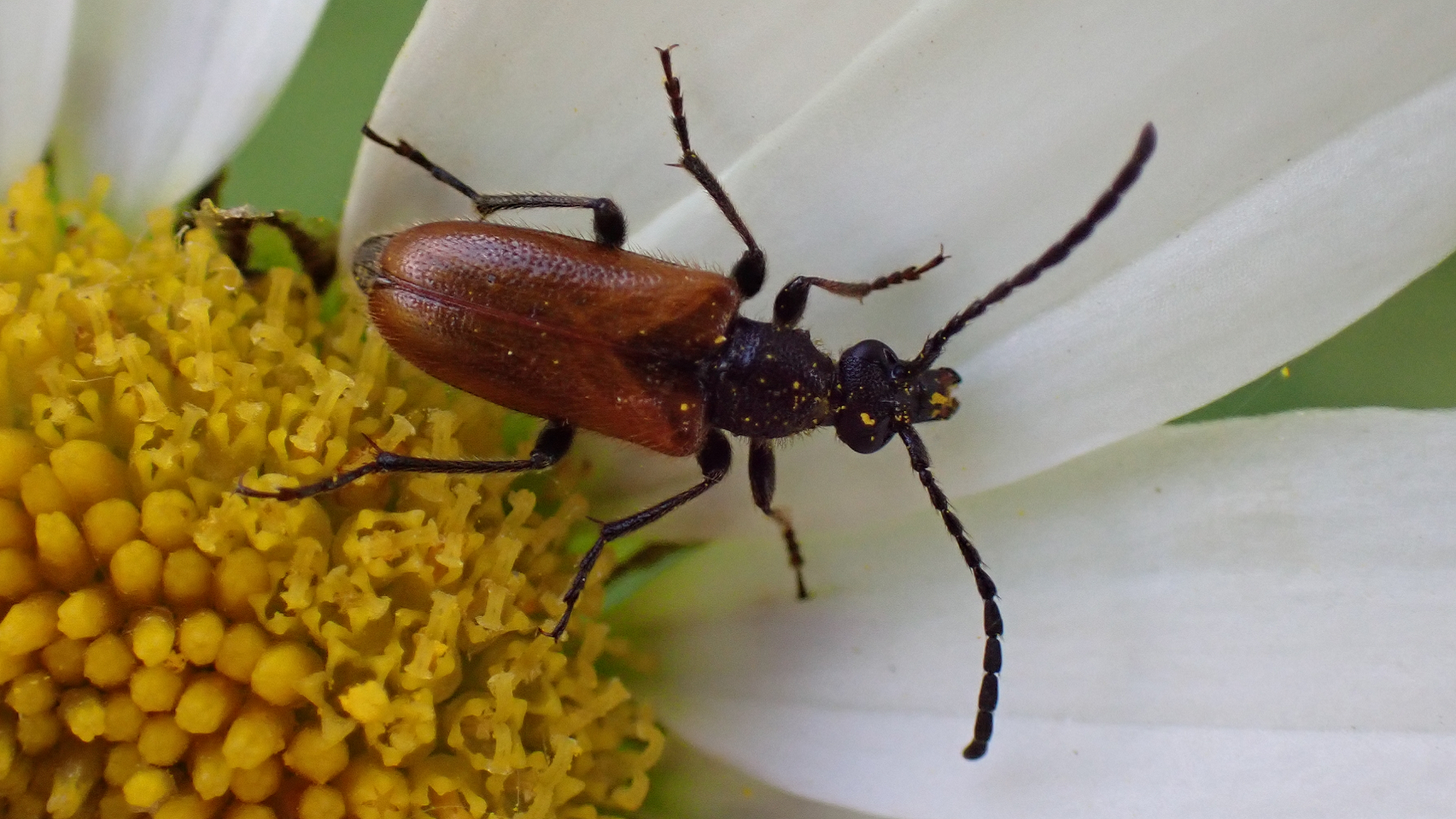Longhorn Beetles belong to the Family Cerambycidae, which is among the largest beetle families globally, including 68 species found in Britain. Approximately 20,000 species exist worldwide. They are known for their long antennae, which serve the purposes of locating mates and suitable nesting sites. Many species exhibit vibrant colours, and some employ warning colouration to discourage potential predators.
Golden-bloomed grey longhorn
Agapanthus villosoviridescens
This bristly beetle measures 18 to 20 mm in length and features black and white banded antennae, along with a golden thorax and elytra. It is commonly found in wet meadows and hedgerows where plants such as nettles, hogweed, and cow parsley are present during the months of May and June.
#
Wasp beetle
Clytus arietus
Measuring between 9 and 18 mm in length, this species employs mimicry to evade predators by resembling a common wasp. In addition to its black and yellow colouration, it enhances this deception through erratic flight movements. The species features orange-brown legs and antennae. It is commonly observed resting on hedgerows from May to July. Its larvae typically inhabit warm, dry, decaying wood, showing a preference for willow and birch.
#
Yellow and Black Longhorn
Rutpela maculata
Measuring between 13 and 20mm in length, this beetle has yellow and black elytra. It is commonly found on woodland hedgerows during the months of June and July. The adults are active in warm weather, where they feed on nectar and pollen. The larvae develop in moist, decaying wood for a period of 2 to 3 years, with pupation happening inside a cell created in the wood. In contrast, the adult beetles have a shorter lifespan, typically living only 2 to 4 weeks.
#
Rufous-shouldered Longhorn
Anaglyptus mysticus
Up to 13 mm in length, this longhorn beetle is characterized by its reddish, black, and white elytra. The thorax may be grey or black. It is found in hedgerows along woodland paths, particularly in areas where hawthorn is present. The larvae burrow beneath the bark, creating galleries filled with very fine wood dust. The development period for larvae typically spans 2-3 years. Pupation takes place in autumn within a gallery made parallel to the wood grain, and new adults begin to emerge around April.
#
Black-spotted Longhorn
Rhagium mordax
The length of this beetle is between 13 to 22 mm. The mottled wing cases feature two large black spots. The antennae are relatively short for a long-horned beetle. This species is found from spring to autumn on plants such as umbellifers, hawthorn, and elder in forested areas. After mating, the females lay their eggs in the cracks of tree bark, typically in areas where the wood is soft and beginning to decay. The larvae create shallow galleries beneath the bark, rarely penetrating the tissue responsible for transporting water and dissolved minerals upward in the tree. The young take 2 to 3 years to mature before reaching adulthood.
#
Variable Longhorn
Stenocorus meridianus
Measuring between 15 and 27mm in length, the body colouration varies, which is reflected in its name. This species prefers open or fragmented deciduous woodlands with abundant marginal vegetation, often found in sunny locations that support a variety of flowers for feeding on pollen. The adult phase has a short duration, typically occurring in June and July, although they may become active as early as mid-May during warm weather and can sometimes remain until August. Mating primarily occurs on the ground or near the base of tree trunks.
#
Large Black Longhorn
Stictoleptura scutellata
The Large Black Longhorn measures about 20mm. It is large and black in colour. This species is rarely documented and is considered nationally scarce, but it appears to be established in certain local areas. Adults are typically active during June and July. The larvae develop in dead deciduous wood and are associated with beech forests.
#
Black-striped Longhorn
Stenurella melanura
The Black-striped Longhorn is a small insect measuring between 6 and 10 mm. Its brown elytra feature a black stripe, and both the head and legs are black. Adult insects can be found on flower-heads during warm summer days. Females lay their eggs in dead wood and decaying timber. The larvae consume dead twigs, branches, and surface roots.
#
Fairy-ring Longhorn
Pseudovadonia livida
Fairy-ring Longhorns range from 5 to 9mm in length, characterised by brown elytra and dark legs. Females deposit their eggs in soil that is rich in humus, particularly where Fairy-ring mushrooms
Marasmius oreades can be found. The larvae typically require two years for development. In autumn, the larvae burrow approximately 5 cm into the soil to overwinter and then resume feeding in the spring. Adults are known to visit flower heads of various plants, such as ox-eye daisies, buttercups, umbels, and yarrow, to obtain pollen and nectar.
#
© hainaultforest.net. All rights reserved.


